- Top
- Eating
- donburi-dish
- history and meaning of Unadon
History, meaning, definition and recipe of Una-don
Japanese have been eating a eel from the earliest times!
Unadon is a Japanese traditional donburi dish which consists a bowl of rice tooped with grilled eel with sauce based on soy sauce. A eel is called Unagi, and a grilled eel is called Unagi Kabayaki or simply called Kabayaki in Japanese. Unadon is an abbreviation for Unagi-don, but it is popularly called by Unadon. Many Japanese eat eels to fight fatigue caused by summer heat on midsummer day of the ox.
Many restaurants serving Unadon are busy on midsummer day of the ox. Nowadays, not only restaurants but also Gyudon restaurant chain serve it around this day. In addition, grocery stores sell Unagi Kabayaki to cook at home. However, some Japanese eat Unadon to treat themselves a little except midsummer day of the ox. It is ranked the top five in the Japanese favorite donburi dish ranking. It became more popular than before, but the price of Unadon is climbing up year by year because the Unagi catch is declining year by year.
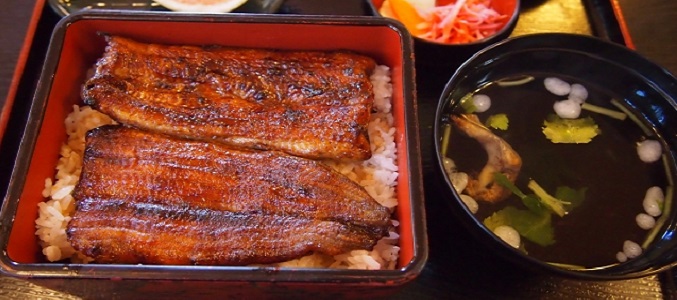
Unaju which also consists Kabayaki and rice is very similar to Unadon, but Unajyu is used a box instead of donburi. Unaju is also different from Unadon in the amount and quality of eel. A body of eel is thick and fatty, that is used for Unaju. A body near head or tail of eel is thin and light taste, that is used for Unadon. Some restaurants serve kimosui soup(clear soup with eel liver) and Japanese pickles only with Unaju. Unaju is more expensive than Unadon in general.
In addition, Kabayaki of east is different from it of west in cooking method. In the east of Japan including Tokyo, a eel is grilled after steaming. East Kabayaki is softer than west Kabayaki, and reduce excess fat by steaming. In the west of Japan including Osaka and Kyoto, a eel is grilled without steaming. West Kabayaki has more texture and fat than east Kabayaki.
Japanese people have been eating a eel from Jomon period(before 14,000 to 300BC) because a fossil of eel in an earthenware called Jomon doki was found. The first article about ell is the poetry written by Yakamochi Otomo in Manyoshu which is the oldest poetry collection compiled during Nara period(710-794). Kabayaki have been eaten from 1399, but it was not cut oepn but cut in round slices then. In addition, it was seasoned with salt, miso or vinegar with Japanese mustard. In Edo period(1603-1868), people in those days eat it with seasoning sauce based on soysauce and miso. Kabayaki became very common then, and the ranking list for Kabayaki is published in 1852.
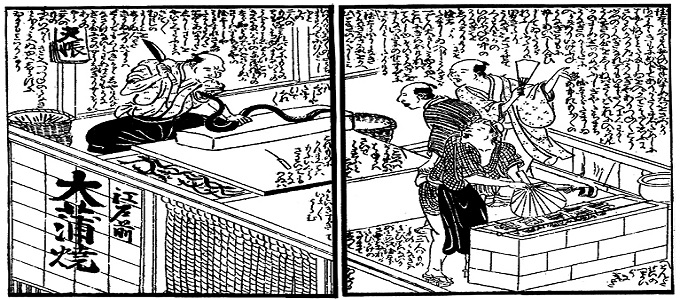
There are many theories about the origin of Unadon, most popular theory is that Imasuke Okubo is the first person who ordered Unadon. In Edo period, restaurants delivered Kabayaki in hot rice bran to keep it warm. Imasuke was very busy as commissioner of Mito domain, and thought it was too much hassle to remove rice bran before eating it. Therefore, he ordered Kabayaki with putting it on hot rice to keep it warm. It is said that is the first Unadon in Japan.
Unaju was born after Unadon. Jubako which is an eel restaurant in Akasaka of Tokyo served the first Unaju in 1960. Other restaurants copied it because its appearance gave classy impression. Jubako is still opening now, and known as one of the oldest ell restaurants in Japan. Many great men went there to eat it, Naoya Shiga, Saneatsu Mushanokoji, Bernard Leach and more.
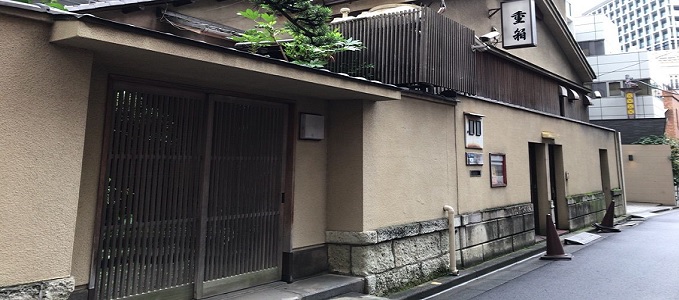
Kabayaki and Unadon expaned from Tokyo to all over Japan, but the most famous fishery of eel is not Tokyo but Hamamatsu city of Shizuoka prefecture. The amount of ell catch in Hamamatsu accounted for 70% of the total eel catch in Japan for a while. Therefore, there are many eel restaurants in Hamamatsu city. Unadon as Ekiben(box lunch sold at railroad station) is very popular for tourists.
By the way, there are many eel dishes except Unadon and Kabayaki in Japan, Shirayaki, Hitsumabushi, Unari-zushi, Bokumeshi, Unagigushi, Umaki, Hansuke and more. Shirayaki is a grilled eel without sauce, and eaten with salt and horseradish. Many eel restaurants serve it as appetizer or delicacies for alcoholic drinks.
Hitusmabushi is very similar to Unaju, but different from Unaju in soup. It is eaten normally at first, and is eaten with pouring soup at the end. Nagoya city in Aichi prefecture is famous for Hitsumabushi. Unari-zushi is a sushi stuffed in a pouch of fried bean curd. It is also local dish of Aichi and Chiba prefecture. It is sold Narita airport nowadays because Narita city is in Chiba prefecture.
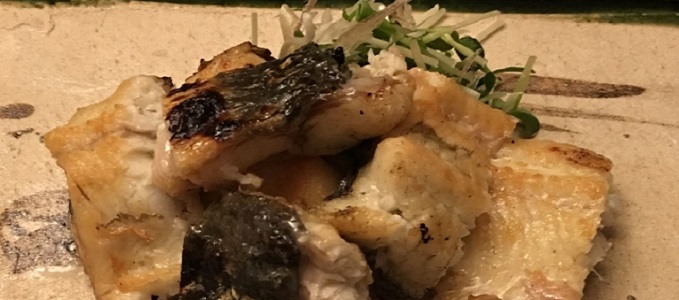
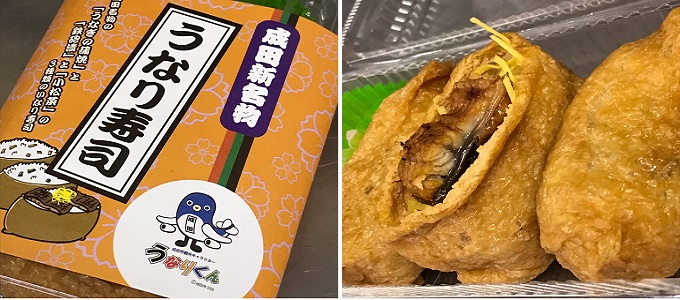
Bokumeshi is boiled rice mixed with Kabayaki and burdock, and is local dish of Shizuoka prefecture. Unagigushi is a spit-roasted eel's meat and liver. It is eaten as delicacies for alcoholic drinks before eating Unadon or Unaju. Many eel restaurants serve it, and some resutaurants specialize it.
Umaki is an omlet with Kabayaki. It is eaten with grated radishes and soysauce. Not only eel restaurants but some Japanese restaurants serve it. Hansuke is a roasted eel's head. It is not eaten in east area of Japan, it is local dish of west area of Japan.

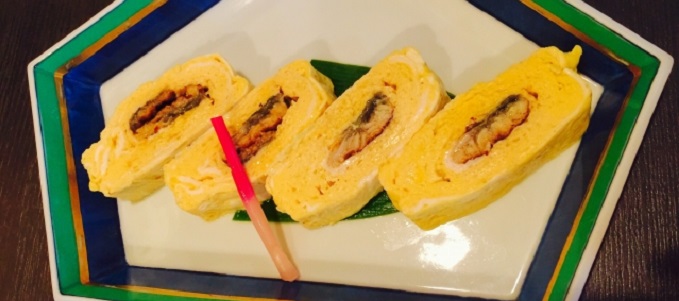
It is too difficult for common people to cook Unadon and Kabayaki from the beginning at home. Because cutting eel is difficult, and blood of eel has poison. Most Japanese buy Kabayaki in grocery stores and put it on rice or go an eel restaurant. If you travel Japan, you can experience Japanese culture through Unadon and Kabayaki.
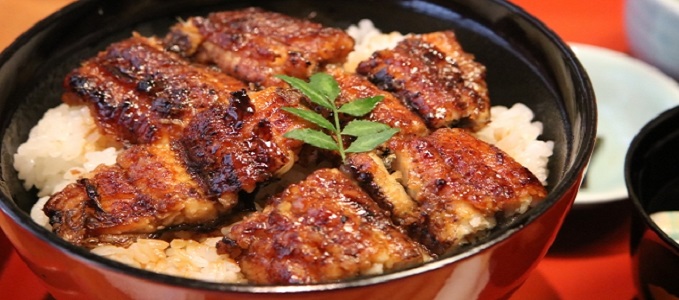
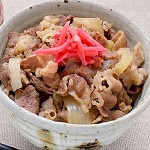 Gyudon
Gyudon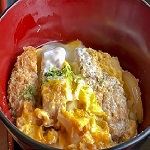 Katsudon
Katsudon Unadon
Unadon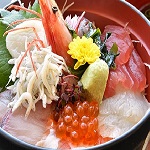 Kaisendon
Kaisendon